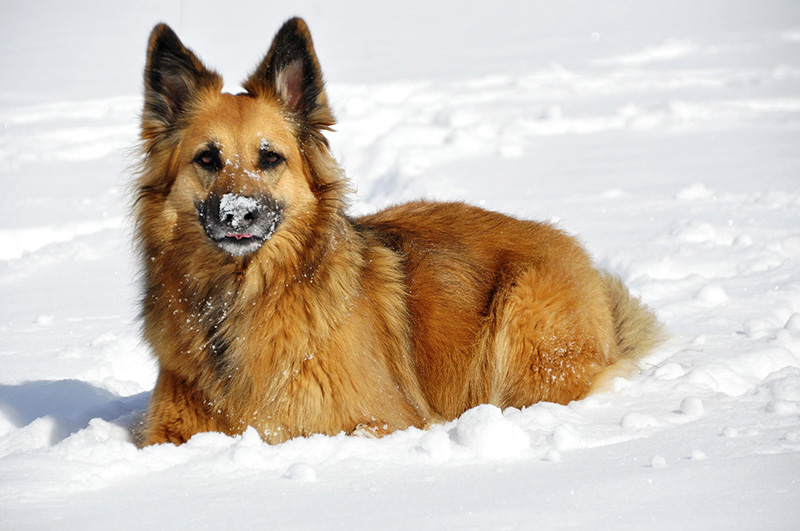
By JC McDowell
Furbaby, it’s cold outside! It’s time to prepare and keep our pets cozy, warm, and safe this winter. Remember these tips to protect your pets from the frightful weather.
- Limit Time Outdoors
Like kids, some dogs don’t know when it’s time to come inside. They may be so excited to play in the snow that they ignore their body’s signals that it’s too dang cold. Know your pet’s limits and bring them inside to warm up between playtime. Young, old, small, and thin-coated dogs will need to come in sooner than their counterparts.
- Bang on Your Car Hood
Cats are known to cozy up near a car’s engine to keep warm. Starting an engine or driving away can lead to serious injury. Even if you don’t have a cat, your neighbor might. Bang on your car hood or honk your horn to scare any cats away from your car.
- Dry Their Paws and Bellies
Wet paws and wet bellies can lead to frostbite and hypothermia. Be sure to keep a towel with you when you travel with your pet. Thoroughly dry their paws, bellies, and tails to protect them from cold injuries.
- Keep them Leashed
Wet and snowy weather can mask familiar smells for your pet. They may not be able to find their way to you or back home, even if they are in a familiar neighborhood or park. Keep your dog leashed and your cat contained in a controlled area.
- Don’t Leave them in the Car
Just like summer heat poses an extreme danger to your pet, so does winter cold. Do not leave your pet in the car during cold weather. It’s best to leave them home if you can not take them inside with you everywhere you go.
- Provide Dry, Draft-Free Shelter
Not all pets are indoor pets. While some severe cold weather warrants every pet to be brought inside, you need to provide protective shelter for the general cold. Create a dry, draft-free space that is big enough for them to stand and lay down it but also small enough to conserve body heat.
- Clean Up Antifreeze Spills
Antifreeze has a sweet aroma and taste that dogs and cats are attracted to. But, of course, it is extremely dangerous for pets to consume. Be sure to keep antifreeze containers sealed and away from pets. Also, thoroughly clean any spills or drips that may occur.
- Don’t Shave Off Their Winter Coat
If your dog has long hair, trim their hair to avoid ice clumps, salt crystals, and de-icing chemicals from building up. But, do not shave their winter coat down to the skin. Let them utilize their natural winter coats to help keep them warm.
- Buy Them a Sweater
Short-haired dogs may need a sweater to keep warm. The same is true for long-haired dogs in colder weather. Don’t be fooled by poufy fur either—fluffy fur does not necessarily equate to warmth!
- Protect Their Paws
Trim your pet’s little foot hairs to help keep their paws dry and free of ice clumps, salt, and de-icing chemicals. The ASPCA suggests slathering petroleum jelly or other paw protectants on their paw pads or put booties on their paws to help prevent dry, flaky skin and even frostbite.
- Feed Them a Little Extra
Your pet’s body uses more energy to keep warm. Therefore, it’s a good idea to feed your pet a little extra during cold weather. Be sure to use elevated bowls to help keep winter moisture from getting in their food.
Kitchen Dog wishes you Happy Holidays! If you are looking for the perfect gift for your pet or a pet-loving family member, check out our wall mounted dog bowls (and cat bowls!). They are excellent gifts for elderly family members who may have trouble bending over to feed their beloved pets. Keep them safe, and their dogs well cared for. Learn more about the Home Safety Benefits of Wall Mounted Pet Bowls.



